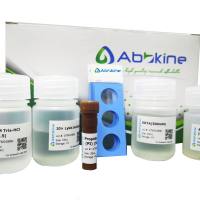Plasmid Artificial Modification: A Novel Method for Efficient DNA Transfer into Bacteria
互联网
互联网
相关产品推荐

彗星法DNA损伤分析试剂盒(3孔载玻片)
¥1498

单宁酸溶液;1401-55-4;25 grams + 100 mL Waterfor Direct Count for Bacteria, Yeast, and Mold;V32785-50ml
¥205

二级淋巴组织趋化因子(SLC)检测试剂盒CCL21; 6Ckine; CKb9; ECL; SCYA21; TCA4; ECL; Chemokine(C-C-Motif)Ligand 21; Beta Chemokine Exodus-2; Efficient Chemoattractant For Lymphocytes
¥800

SLAMF7/SLAMF7蛋白/CD2 subset 1 (CD2-like receptor-activating cytotoxic cells)(CRACC) (Membrane protein FOAP-12) (Novel Ly9) (Protein 19A)蛋白/Recombinant Human SLAM family member 7 (SLAMF7), partial重组蛋白
¥69

Recombinant-Rhizobium-sp-Probable-conjugal-transfer-protein-trbItrbIProbable conjugal transfer protein trbI
¥12614
相关问答

